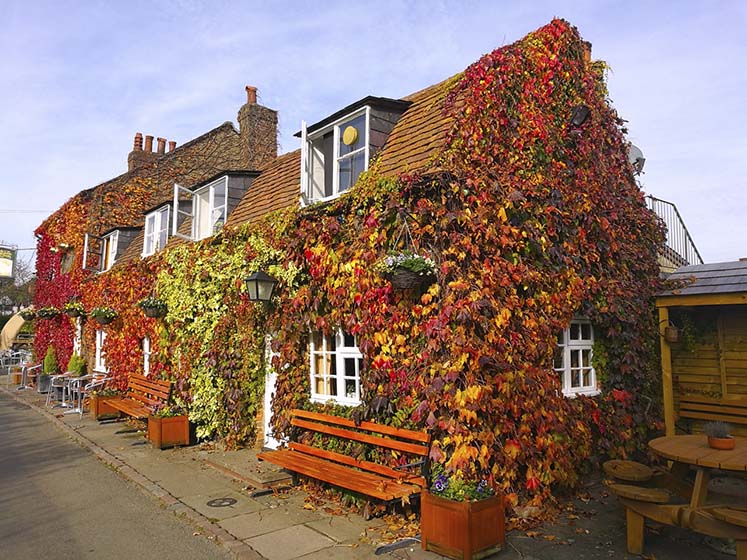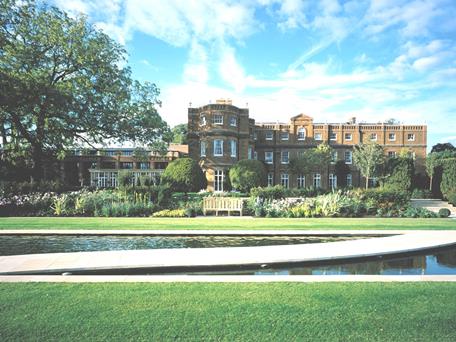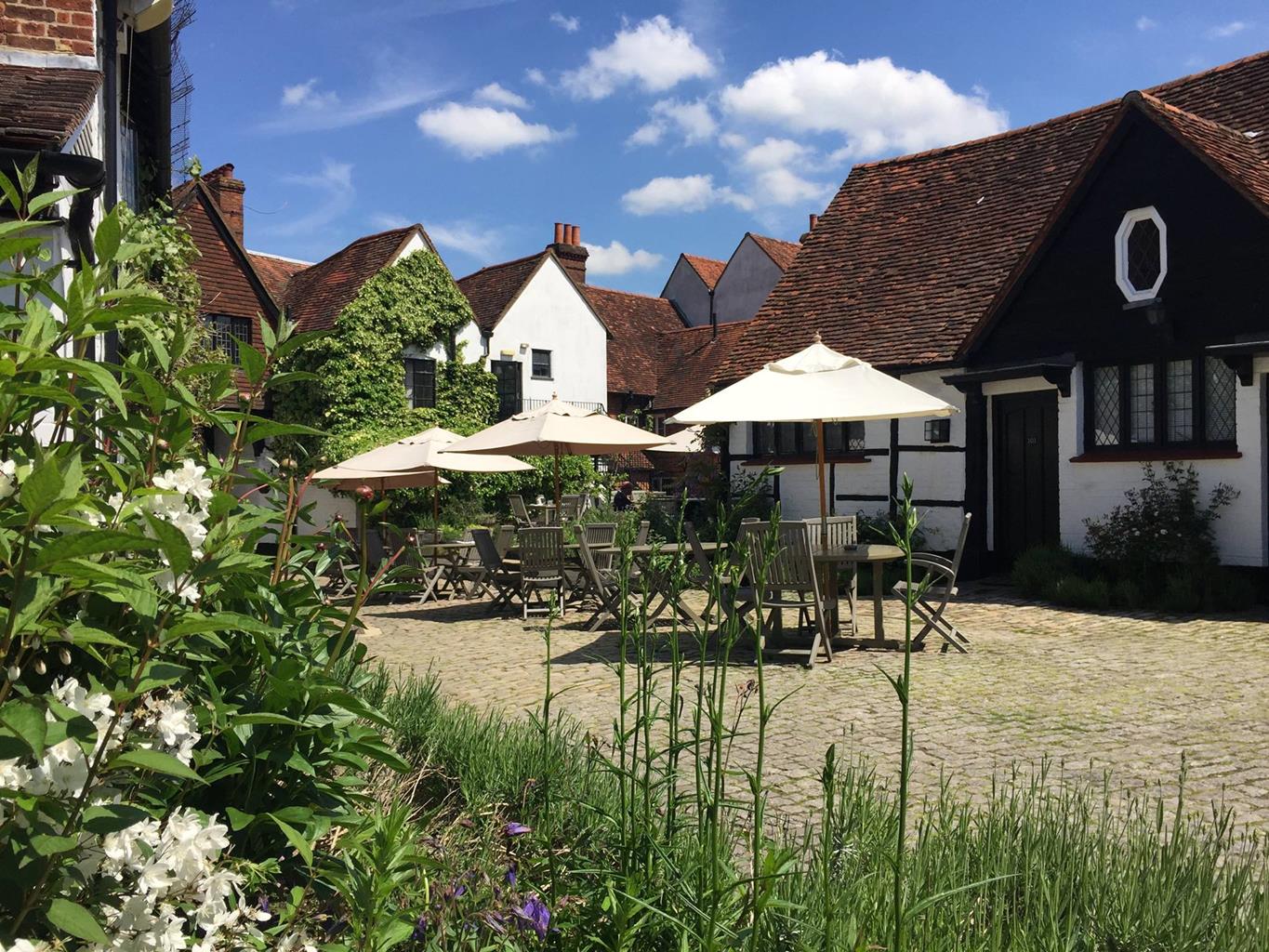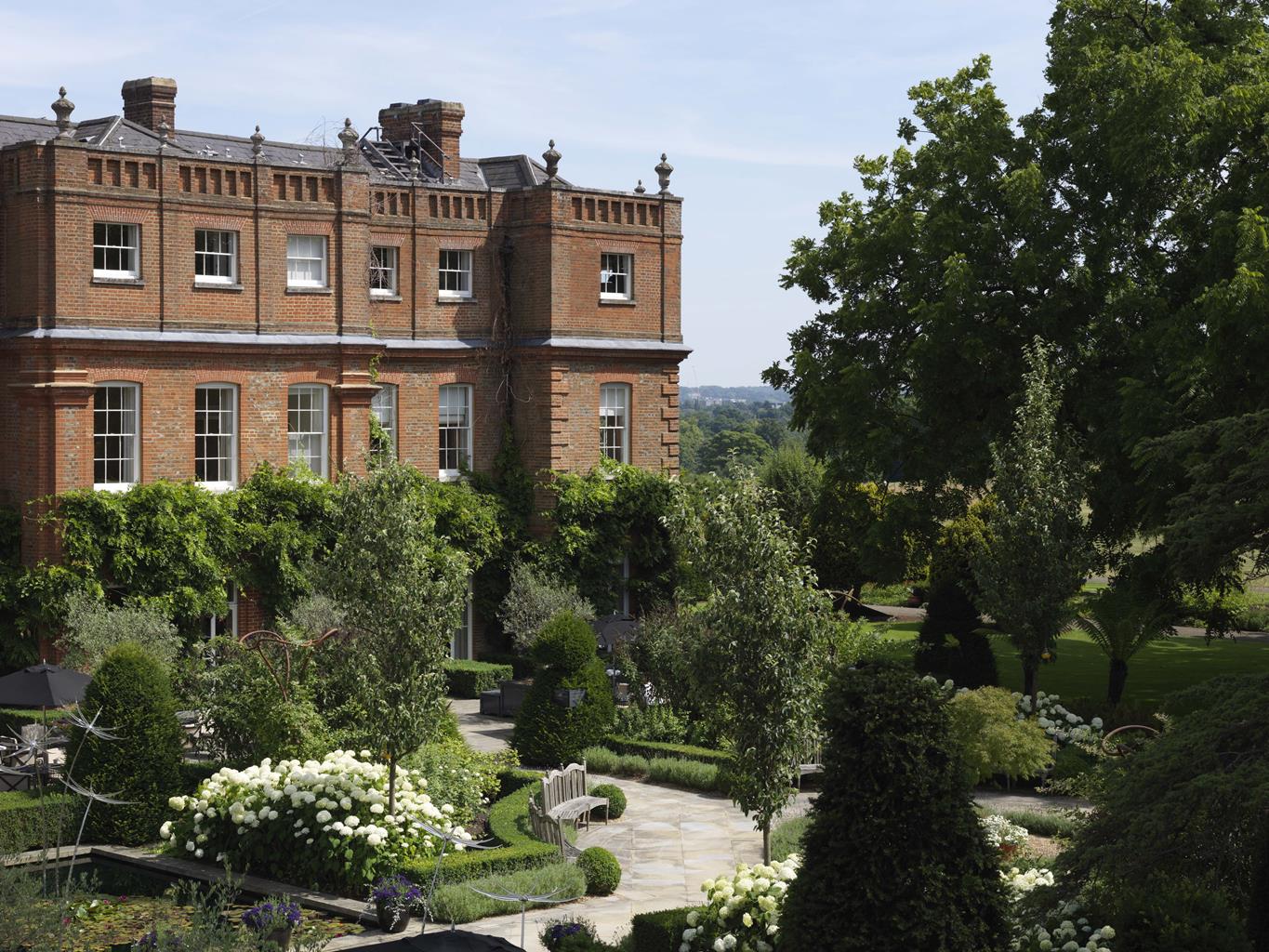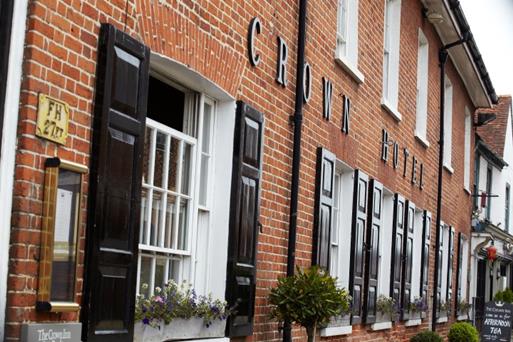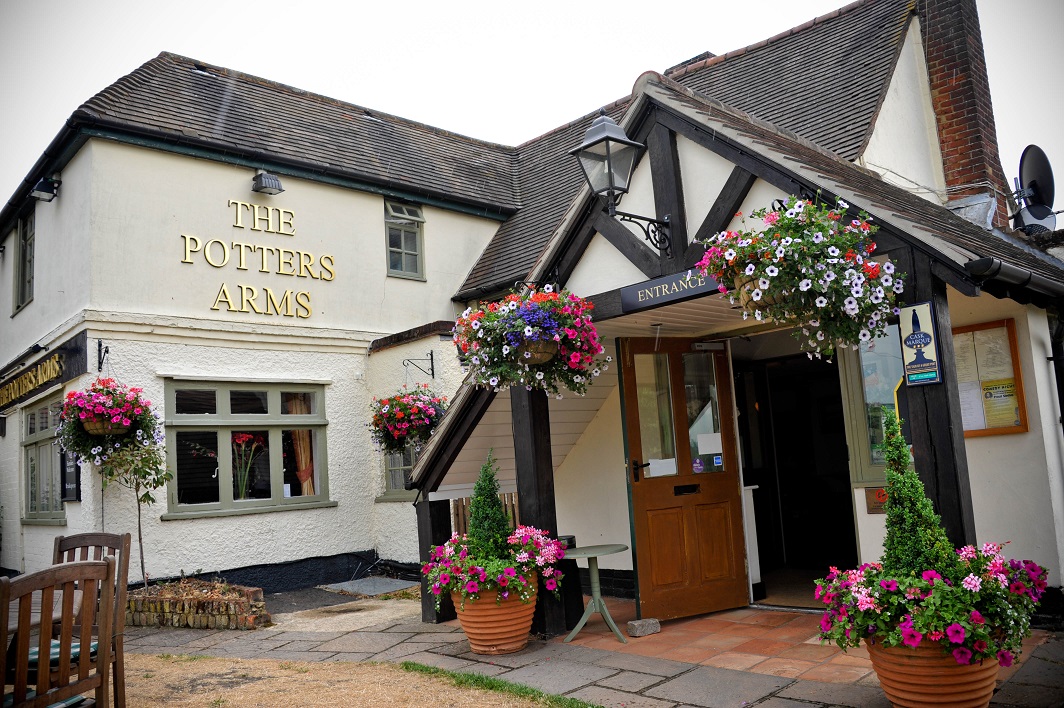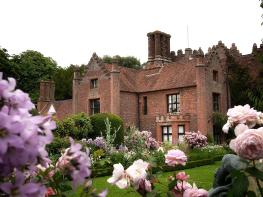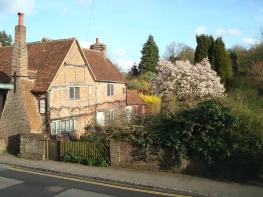Set amid 300 acres of rolling countryside, much of which is golf course, The Grove combines…
Around the Chess Valley

7.5 miles (12.1kms)
About the walk
In the late 18th century Flaunden village migrated uphill to cottages built by Lord Latimer, who owned the manor. These rows of flint and brick cottages remain today. In 1838 the rector of Latimer's nephew, the young George Gilbert Scott, designed his first church here, a humble start for the great Victorian architect. He later described it as 'the poor barn'.
On a romantic site, within a copse in the water-meadows of the River Chess, is the lost church of Flaunden. East of Latimer village, you can leave the path to read an information board that tells the story of Flaunden's old church. Built in about 1230, it was a small cruciform church. Now vanished, in 1910 it was still standing but described thus: 'Condition – Very bad; the ruins are loaded with heavy ivy, and much damage has been done by visitors.' There is a non-churchyard burial further east of the old church, alongside the Chess Valley Walk. It is the tomb of William Liberty who died in 1777.
Watercress and cattle
Further east along the Chess Valley, south of Valley Farm, are working watercress beds, once a common sight in the region. Back up on the Chiltern plateau, Sarratt is a village of two distinct parts. The original centre around the church is over 0.5 miles (800m) from the present core of the village, which is clustered around the long, narrow green, itself 0.5 miles (800m) from end to end. Sarratt was a famous droving stop on cattle and sheep routes to London. At one time there were more than five pubs, as well as three ponds for watering the stock. The village gravitated to the green, leaving the church in comparative isolation, with just the manor house, a couple of cottages, The Cock Inn and the row of almshouses, with Gothic-arched windows, built by Ralph Day of Sarratt Hall in 1821. Sarratt's Holy Cross Church is an almost complete one from around 1190. Its chancel was lengthened later in the Middle Ages and a west tower was added to the short two-bay nave.
Walk directions
From Sarratt Green walk north. Beyond Great Sarratt Hall Farm go left through a kissing gate, signed 'Rose Hall'. Go through a kissing gate, bear right across pastures, then via two more kissing gates, go along a lane, beside some woods, now on the Chiltern Way. Take the left fork to skirt Rose Hall Farm to a path and a stile. Go through a kissing gate and skirt right of the barns of Bragman's Farm to the lane via a kissing gate and a hand gate.
Turn left uphill and go right at a 'Chiltern Way' sign via a stile. Go diagonally across the field to a stile, then by the hedge to a lane via a kissing gate. Turn right. Past Newhouse Farm turn left on to a path. At a kissing gate go diagonally right across a field and, through a kissing gate at the hedge, bear right to a lane.
Go through a kissing gate, turn left and walk through Flaunden. At the church turn left on to a bridleway signed 'Public Restricted Highway'. Follow this to a T-junction by two small observatories and turn right.
As the lane goes left, carry on along a bridleway into woods. Go left, ignoring a path to the right. Eventually fork right and descend steeply. Emerging from the wood descend between fences to the road.
Turn left, pass Latimer Green, then turn left again, passing through a kissing gate on to the Chess Valley Walk. Descend to an information board on the right about Flaunden old church. Rejoin the path and go through a kissing gate, passing Liberty's tomb. Go through a hand gate, follow the waymarkers through Mill Farm via two hand gates and turn left on to a lane.
After about 150yds (137m) leave the lane on the right and carry on through a gate, on the Chess Valley Walk. Go through a kissing gate into a copse, and on leaving it follow the path between fences, crossing a stile. When you reach a concrete access road go straight on, with working cress beds on your right.
At the lane turn right, bearing left uphill at a T-junction, leaving the Chess Valley Walk. Beyond Cakebread Cottage go right, through a kissing gate. Ascend alongside a hedge, go over a stile and cross pasture to the left corner to join a sycamore and beech avenue. Cross over a stile and walk alongside a holly hedge to Sarratt churchyard.
Retrace your steps out of the churchyard and bear diagonally right towards the woods – you will reach them at a Chiltern Way signpost. Continue along the wood edge, then cross a drive via a stile and a kissing gate. Follow the path through a copse, then alongside a hedge through pasture to emerge via a kissing gate between houses into Sarratt Green.
Additional information
Paths, tracks, village roads and country lanes
Chalk plateau and water-meadows
Frequent horses and cattle; signs near Latimer. Off lead in Long Wood north of Latimer
OS Explorers 172 Chiltern Hills East; 182 St Albans & Hatfield
On west side of Sarratt Green
None on route
WALKING IN SAFETY
Read our tips to look after yourself and the environment when following this walk.
Find out more
Also in the area
About the area
Discover Hertfordshire
As Hertfordshire is so close to London, many of its towns have become commuter havens. St Albans, less than 19 miles (30km) from the capital, has retained its distinctive character, along with many historic remains. The Roman city of Verulamium is situated in a nearby park, and excavations have revealed an amphitheatre, a temple, parts of the city walls and some house foundations. There are also some amazing mosaic pavements.
The abbey church at St Albans is thought to have been built on the same site where St Alban met his martyrdom in the 3rd century. The abbey was founded in 793 by King Offa of Mercia, and contains the saint’s shrine, made of Purbeck marble. Lost for years, it was discovered in the 19th century, in pieces, and restored by the designer of the red telephone box, Sir Giles Gilbert Scott. The abbey also contains some wonderful medieval wall paintings. Nicholas Breakspear was born in St Albans, the son of an abbey tenant. In 1154 he took the name Adrian IV, and became the first, and so far only, English pope. Another famous son of Hertfordshire was Sir Francis Bacon, Elizabethan scholar and Lord High Chancellor, born in Hemel Hempstead in 1561.
Nearby stays
Restaurants and Pubs
Nearby experiences
Recommended things to do
Why choose Rated Trips?
Your trusted guide to rated places across the UK
The best coverage
Discover more than 15,000 professionally rated places to stay, eat and visit from across the UK and Ireland.
Quality assured
Choose a place to stay safe in the knowledge that it has been expertly assessed by trained assessors.
Plan your next trip
Search by location or the type of place you're visiting to find your next ideal holiday experience.
Travel inspiration
Read our articles, city guides and recommended things to do for inspiration. We're here to help you explore the UK.


